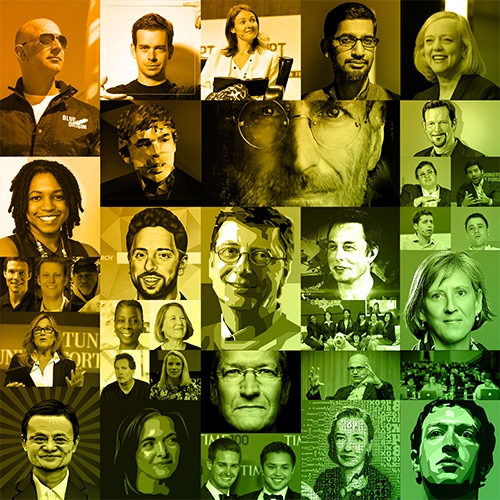TALK to the REASONS (T2TR)
A VOICE-ACTIVATED, IMMERSIVE AI EXPERIENCE FOR 13 REASONS WHY
BACKGROUND
With Season Two of 13 Reasons Why (13RY), Netflix needed more than a trailer drop. The goal was to deepen fan engagement and extend the show's storytelling beyond the stream.
Netflix crafted an immersive digital experience from the characters' world. They launched character-specific finstas (fictional Instagram accounts) — each with curated posts, captions, and saved Stories that hinted at plot points.
Then, they unveiled TalkToTheReasons, a mobile-only voice-activated, interactive AI experience designed to mimic a Liberty High student's smartphone.
( Note: the campaign has run its course, and the domain is no longer active. )
MY ROLE
my role: FUI, Prototyping, UX Testing, designing the UX-UI for both the primary “happy path” and the secondary experiences that kick in if the AI fails.
platforms: iOS and Android. Also degradation for unsupported hardware/software
tools-processes: Analytic Review, Market Research, Collaborative Virtual Whiteboarding, and complex problem solving, in-person user-testing
Launched in over 30 countries and translated into 8 different languages, Talk to the Reasons (T2TR) was a mobile-based AI-driven experience that allowed anyone to be a “real” classmate at Liberty High.
Blurring the line between fiction and reality, T2TR allowed fans of 13 Reasons Why to interact with characters through simulated iPhone screens, notifications, messages, and FaceTime calls.
THE CHALLENGE
Design the UX fail-safes—handling empty, error, and incomplete states by integrating contextual UI elements and secondary navigation paths that preserve user flow and support non-linear task completion. These tasks also included designing a unique share flow, in-app selfies, and communication UIs.
T2TR EXPERIENCE HIGHLIGHTS
A fictional but real-world accurate home screen complete with app icons for Instagram, Houseparty, and Netflix
Interactive FaceTime / HouseParty calls with the TV series characters
Group chats that adapt based on the user’s choices
Real-time texts and notifications that draw you deeper into the plot
Fully responsive storytelling designed for Safari (iOS) and Chrome (iOS + Android)
THE WORK + ACTIONS TAKEN
T2TR was a Netflix project helmed by Moth+Flame, who employed a host of experts. These action statements cover only my UX-UI, user logic, and visual design contributions to the project.
UX-Centered Coordination: To protect the integrity of the user experience, I stepped in as the bridge between creative, engineering, and game design, translating ideas across disciplines to keep things cohesive.
As narratives evolved and new UX challenges surfaced, I tracked changes in real time, flagged potential friction points, and ensured every adjustment aligned with the intended user journey. This daily coordination became critical to preserving continuity and delivering a seamless experience for the final stretch leading up to launch.
Making it feel real: I had to design an immersive that looked and acted like a real smartphone—texts, calls, notifications, etc. This fictional UI (FUI) had to coexist with the existing social media apps without confusing users.
The FUI had to be complementary to avoid disrupting users’ technological fluency.
Keeping up with the story: The way scripted components were linked changed daily, and updating the UX-UI needed to be just as fast, often overnight.
Working with web tools: Since this wasn’t a native app, we had to get creative to make a web-based experience feel smooth and real.
Meeting a sharp audience: Gen Z users notice everything. If anything feels off or fake, it instantly breaks the illusion.
Aside from hands-on design, my key contribution was advocating for design restraint. I resisted visually overbuilt UI requests that risked breaking immersion and undermining the realism of the experience.
Advocating for the user, these decisions helped preserve the “suspension of disbelief” critical to audience engagement.
MAKING IT FEEL REAL
Designing a fictional UI that lives alongside real apps is a delicate balancing act. It needs to feel instantly familiar—borrowing cues from platforms like Instagram or iMessage—so users know how to interact with it.
However, it also has to stop short of copying those interfaces exactly to avoid confusing users or erasing the line between fiction and function.
The challenge is building just enough realism to maintain immersion, while introducing subtle differences that signal, “this is part of the experience.” At the same time, it still has to work—every button, screen, and flow must serve a clear purpose in the story or interaction.
A CROSS-SECTION of UI in the FINAL UX
USER RESPONSE + RESULTS
RESULTS: FINAL DESIGN
Fully immersive: The experience looked and felt like a real phone interface, drawing users in and earning high praise for realism and creativity.
Fast turnaround: We worked in 24-hour cycles to stay in step with Netflix’s evolving direction and feedback.
Smart workarounds: Mixed simple animations with polished prototypes to move fast without cutting corners.
Validated by users: Real-time feedback confirmed we nailed the look, feel, and flow — contributing to a successful, buzzworthy launch.
RESULTS: EARNED MEDIA, SOCIAL MEDIA, VIEWERSHIP
The campaign blurred the line between fan and character. Instead of watching drama unfold, fans were pulled into the world, chatting, reacting, and influencing it. There were no downloads, no AR headsets, just immersive storytelling powered by web-native tools.
Outlets like Teen Vogue and Refinery29 provided the T2TR with ample press coverage while fans shared the experience on major social media platforms, including Reddit.
Netflix does not release official viewership data/stats on its programming or viral campaigns. However, third-party firm Nielsen estimated that over 6 million people watched the premiere within three days, with an average of 2.6 million viewers per episode.*
RESULTS: AWARDS
Talk to the Reasons (T2TR) was nominated in the “Outstanding Creative Achievement In Interactive Media Within A Scripted Program” category of the 70th Emmy Awards. It also won Silver at the Cleo Awards, known as the "advertising equivalent of the Academy Awards.”
WHY IT WORKED
Talk to the Reasons wasn’t just a television series promo. It was a participatory narrative — a digital experience built to engage emotionally, and a reminder that when technology meets storytelling, the screen becomes part of the story.


























